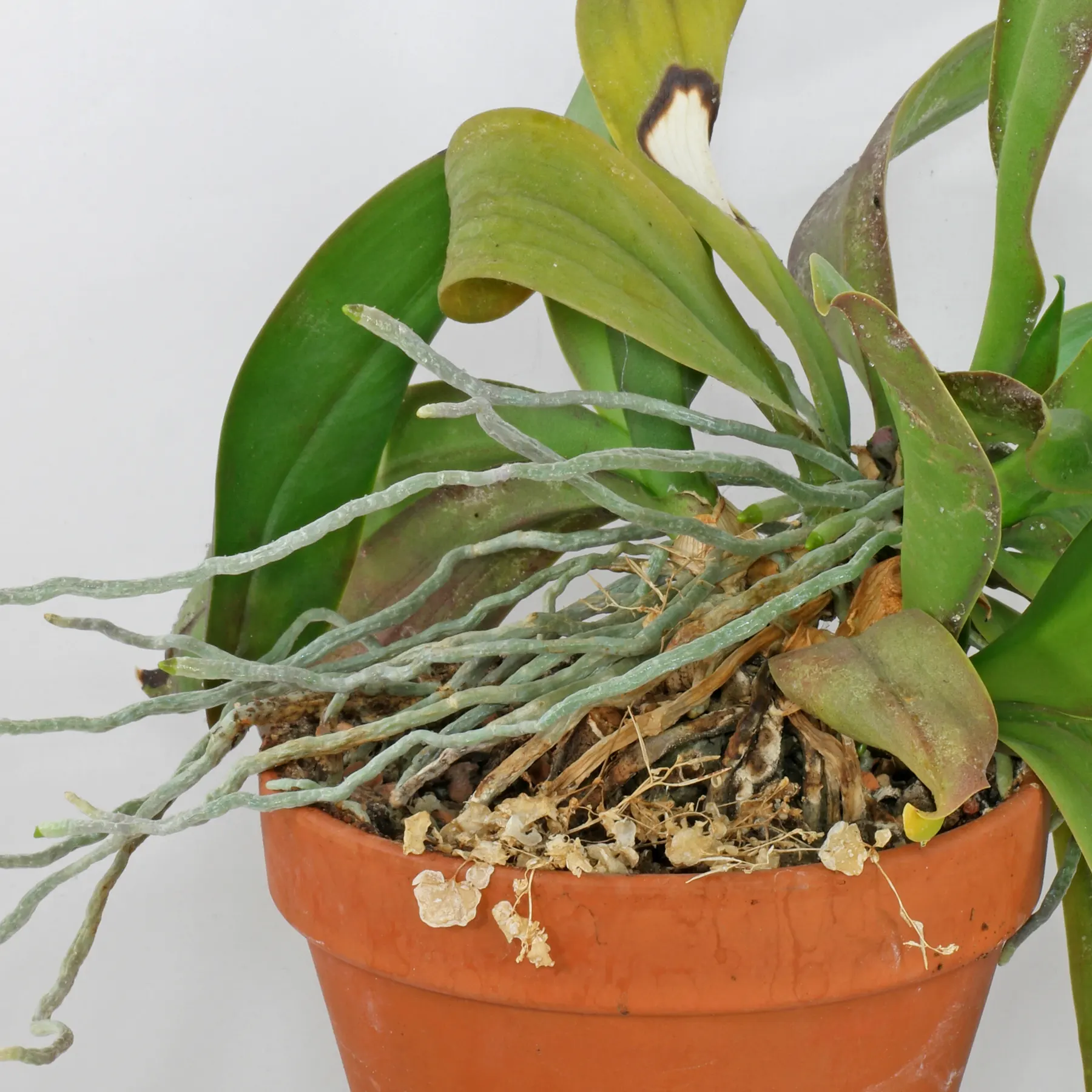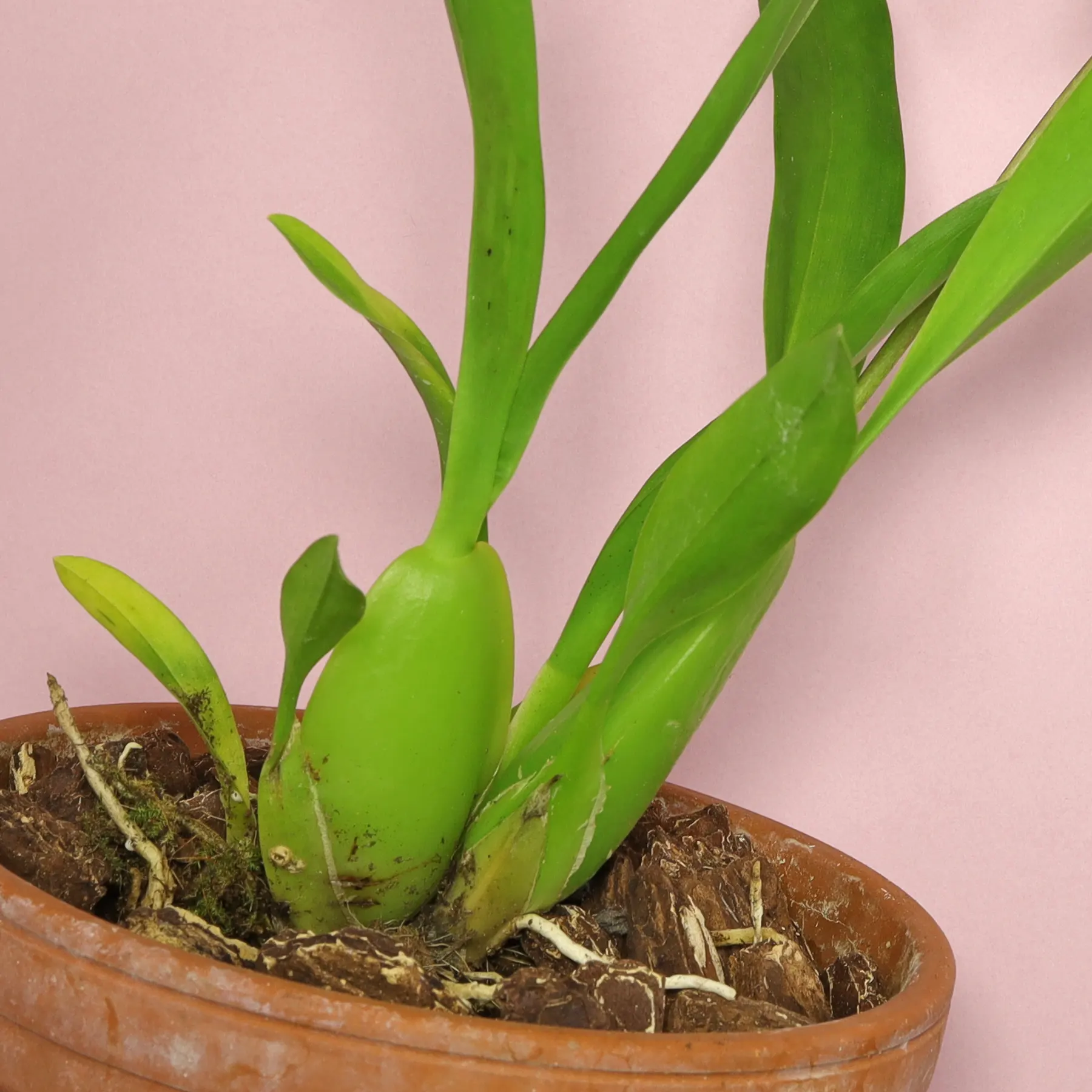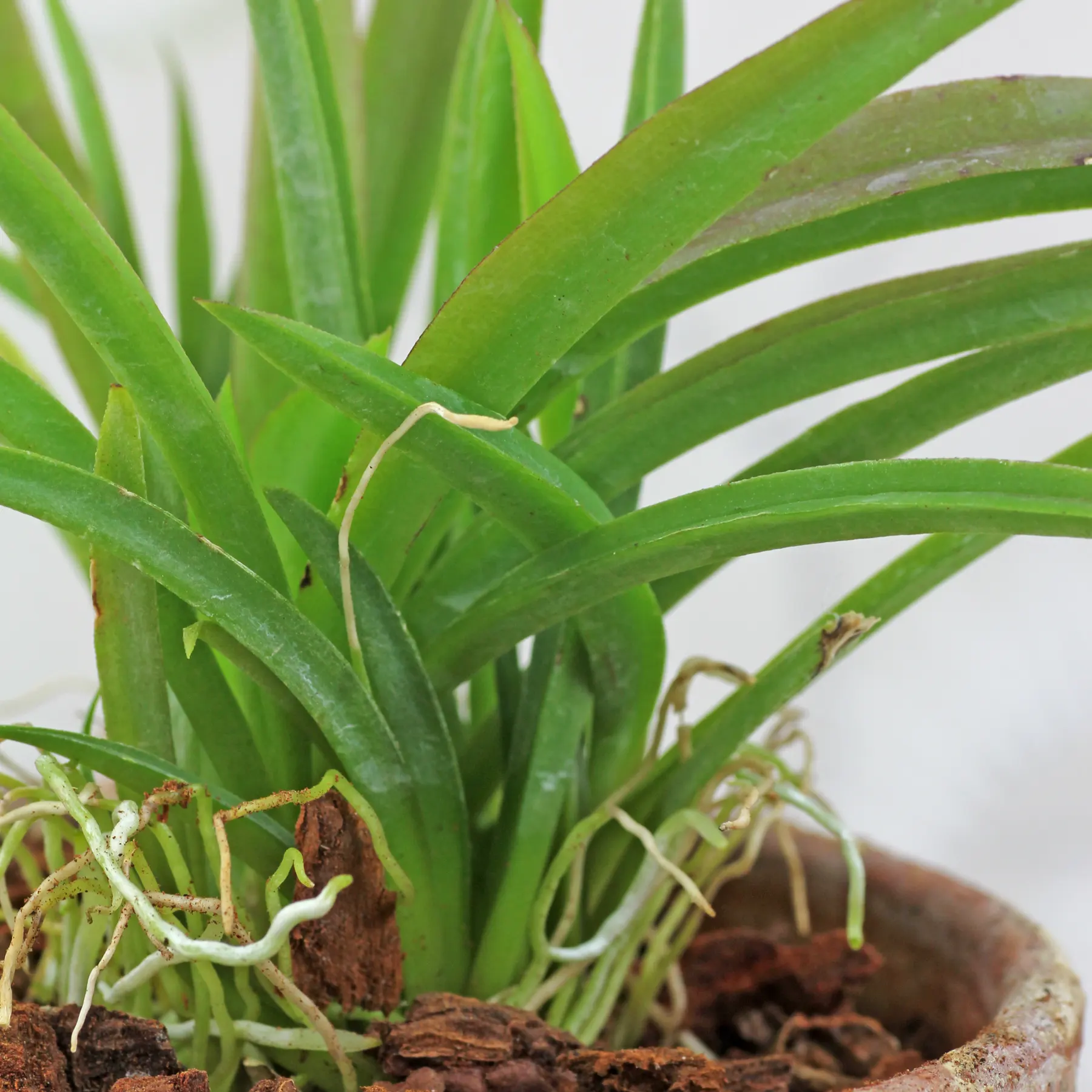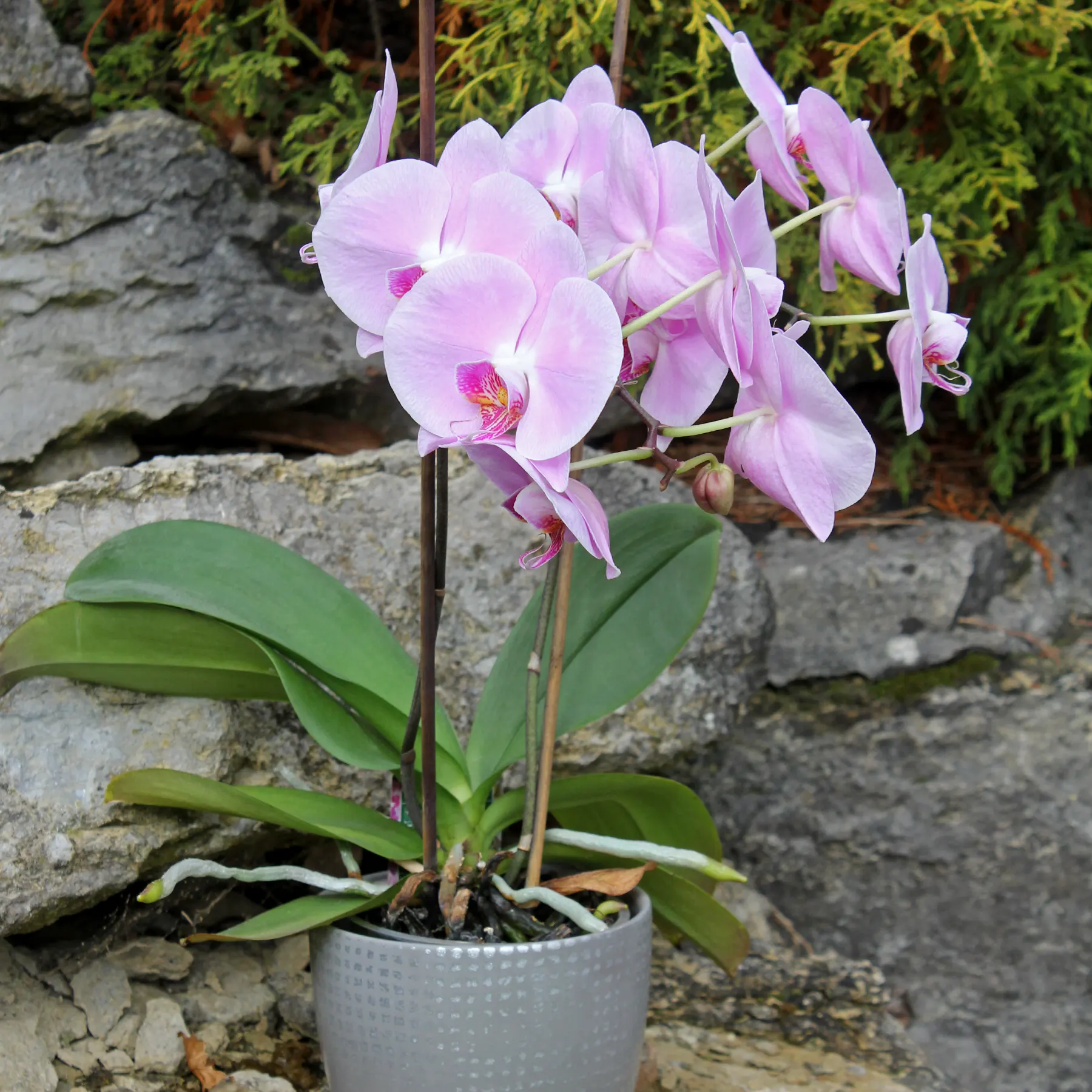The fact that many orchids also have succulent abilities is often not apparent to them at first glance. They can store water in their leaves, pseudobulbs or roots.
This ability allows them to survive dry periods, which also occur in tropical and subtropical regions. Thanks to their integrated water storage, they can grow without substrate, for example, sitting on trees.

The orchid family (Orchidaceae) is said to include between 15000 and 30000 species (source). In order to spread so successfully, orchids have had to adapt to quite different habitats. They inhabit not only warm regions, but also temperate or cold ones. Some can grow under water, others sitting on rocks or trees.

Where do orchids store water?
Several plant parts are used for this purpose. Some species use pseudobulbs. They can be shaped like a bulb or onion, or stem-shaped. Leaves grow on or from them, but most of them are shed after flowering. So that only the pseudobulb remains, as a water and nutrient store.

Pseudobulbs offer another advantage: they can work like cuttings and resprout. In case the orchid is damaged or falls off the tree.

Not all orchids use pseudobulbs to store water. Some species use thick and fleshy roots or leaves for this purpose. So they can grow in sunny locations or in well-drained and stony soil.

Why you should not trust posts like “how to care for orchids”.
As should be readily apparent from the pictures and my explanations, orchids are quite individual plants. Which may not all be treated in the same way. Even the popular varieties that are regularly offered in supermarkets differ in their needs.
Which is why the “how to care for orchids” articles often found on the web are bullshit. They were created just to generate clicks.
By the way, this also applies to “how to care for cacti” or “how to care for succulents”. A cactus from the Brazilian rainforest has different requirements for light, water and temperature than a prickly pear from Canada.

